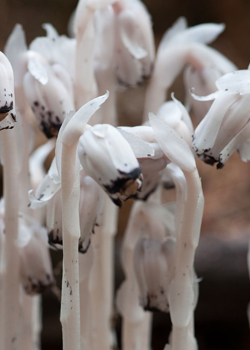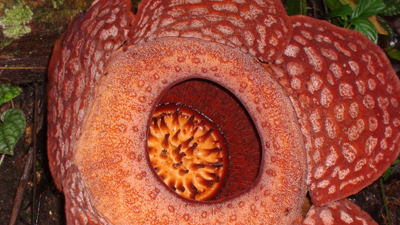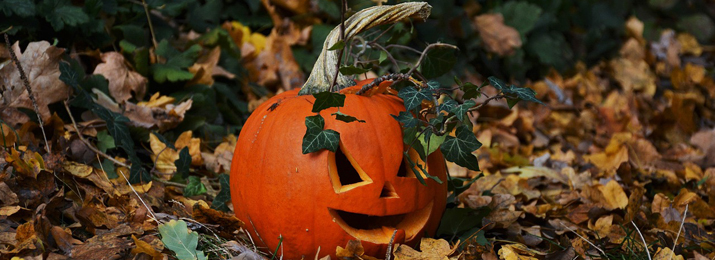Botanical life very rarely gets its dues for being terrifying, despite the fact that a number of plants look like they were made just for the thrills and chills. In true Green Team Interiors style, we are celebrating Halloween with some of the world’s most frightening plants that will be sure to give you the creeps!
Hydnellum peckii (Bleeding Tooth Fungus)
Commonly found in areas such as North America and Europe, Hydnellum peckii is a hydnoid fungus that attaches itself to host tree roots and releases minerals and amino acids. True to its name, when young, the moist fruit bodies can “bleed” a bright red fluid. The unusual appearance has earned the species a number of alternative names, including “strawberries and cream” and “devil’s tooth”. The fungus is inedible, however, so you probably want to avoid looking to it to add a twist of flavour.

Monotropa uniflora (Ghost Plant)
As pale as a ghost, the Monotropa uniflora plant is certainly aptly named. Unlike the majority of plants, it doesn’t contain chlorophyll and therefore doesn’t produce energy from sunlight. Instead, the ghost plant prefers to reside in dark nooks and crannies while absorbing energy from fungi that are mycorrhiza with certain trees and plants.

Physalis alkekengi (Chinese Lantern)
Don’t be fooled by the Chinese lantern’s seemingly innocent appearance. While maturing, the plant appears delicate, but when dried, it reveals itself as a small orange fruit encased in a skeletal shell. In Japan, seeds from the fruit are used as offerings to guide the souls of the deceased. We wonder where to?

Brugmansia (Angel’s Trumpets)
The bold, trumpet-shaped and highly fragrant flowers of the Brugmansia are certainly eye-catching, but what you may not know is that they also have a shady history. In South American tribal cultures, the hallucinogenic properties of the plant were used for sorcery, black magic and even to call forth the dead. To top this revelation off, all parts of the Brugmansia are poisonous, with exposure potentially causing paralysis, migraines, confusion and even death.

Atropa belladonna (Deadly Nightshade)
This perennial herbaceous plant is a member of the Nightshade family, sharing potatoes, tomatoes and eggplants as relatives. Its foliage and berries are extremely toxic, but that hasn’t stopped the plant from being used for medicinal and cosmetic purposes. In the Middle Ages, Deadly Nightshade was even believed to be the devil’s favourite plant. Any friend of the devil is not a friend of ours!

Rafflesia (Corpse Flower)
Not to be confused with the titan arum, this corpse flower is unique in that it has no stems, leaves or true roots. Commonly growing to over 39 inches in diameter, the monstrous flower of the Rafflesia is also the largest in the world. While this may impress you, your feelings may change once you get close enough to catch its rotting flesh-like aroma. As with similar flowers, the scent is designed to attract insects to pollinate it.


